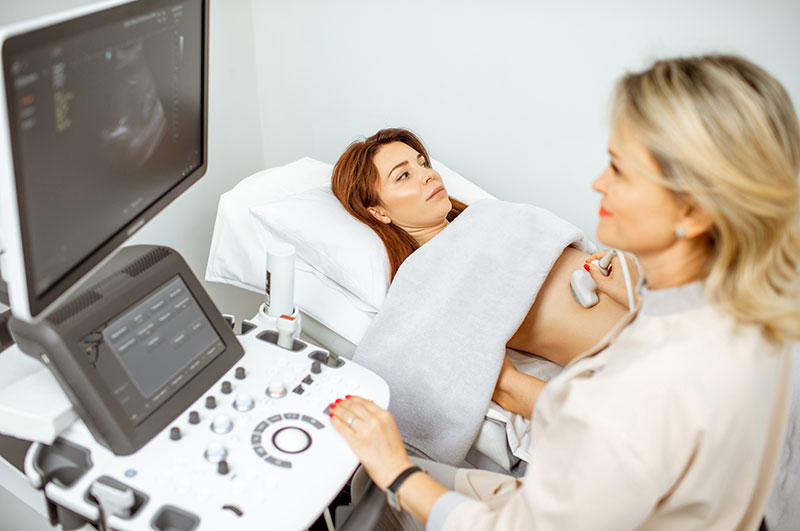
Ultrasound
Ultrasound produces images of soft tissue and organs in the body through the use of sound waves that reflect back and are displayed as a real-time image. Ultrasound can detect diseased or damaged tissues, locate abnormal growths and identify a wide variety of conditions, enabling your radiologist to make a quick and accurate diagnosis.
Ultrasound uses a transducer – a wand-shaped device – that when gently pressed against the skin directs high-frequency sound waves into the body. These sound waves echo back and the transducer electronically converts the reflected waves into very precise images of the body.
Tests Included
- Sample Type: Blood & Urine
- HSA/FSA: Accepted
- Collection Method: In person at a Labcorp location
- Results: 1 day from when your sample arrives at our lab
Preparation: Fast for 12 hours (no food or drink, except water) before sample collection. If you’re taking a supplement containing biotin (also called vitamin B7 or B8, vitamin H, or coenzyme R), commonly found in products promoting nail, skin and hair health, it is recommended that you wait at least 72 hours from your last dose before sample collection.
Depending upon the part of the body being examined, you may be advised to drink water to fill the bladder or to be fasting for at least eight hours. Many ultrasound exams have no preparation required.
You should wear comfortable clothing on the day of your examination.
Abdominal Ultrasound (G.B., Liver, Pancreas)
- Do not eat or drink after 10 p.m. the night before the exam.
- Do not withhold medication – a tablet may be taken with a small amount of water.
Kidney and Bladder Ultrasound
- Drink 20 oz. of water one hour prior to exam. Do not empty bladder until after exam. (Avoid caffeine and milk.)
Pelvic (transabdominal and transvaginal) and First Trimester OB Ultrasound
- Drink 32-40 oz. of water one hour prior to exam. Do not empty bladder until after exam. (Avoid caffeine and milk.)
Second and Third Trimester OB Ultrasound
- Drink 20 oz. of water one hour prior to exam. Do not empty bladder until after exam. (Avoid caffeine and milk.)
A medical diagnostic sonographer performs an ultrasound examination. To perform the exam, the sonographer uses a transducer, along with hypoallergenic, water-soluble gel applied to the area being examined. The transducer generates and receives the high-frequency sound waves while the ultrasound gel helps to transmit the sound wave.
After your ultrasound examination, a radiologist will interpret the images and dictate a report that is sent to the referring physician. Results are typically available within 2 – 4 hours. Your physician will then advise you of the results and discuss what further procedures, if any, are needed.
There are no known side effects from ultrasound imaging, and it is not necessary to take any special precautions following your examination